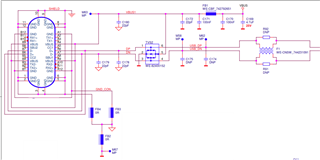I see many similar questions to this, but I want to double check my understanding.
We have the nRF52840 connected to D-/D+ on a USB Type-C connector. We have a standalone IC to enable battery charging by listening at 5V on VBUS. However, when we are using USB C-USB C cables this is not working, because 5V is not supplied on the VBUS. We can solve this by adding an appropriate pullup resistor to the CC pins, but this will lead to a change in existing PCB, so I was looking at the option of using the nRF chipset to initiate the USB 2.0 PHY alternative. We are not using the USB interface today for other than charging.
Is this possible, or will this fall under the limitation of not supporting USB-IF Battery Charging spec 1.1?





